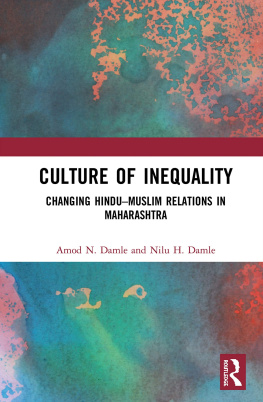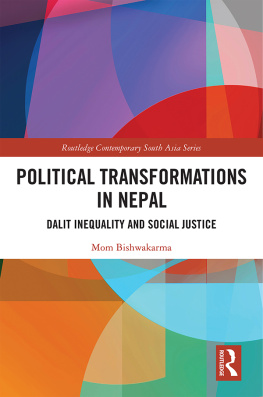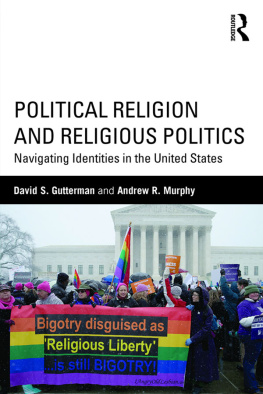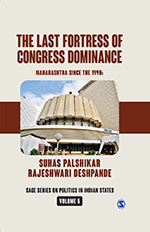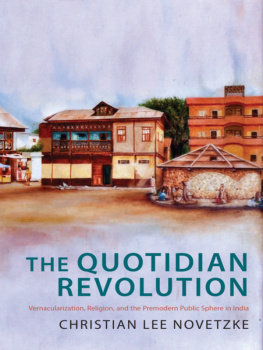CULTURE OF INEQUALITY
This book offers a historical perspective on the changing HinduMuslim relationship in India through a study of syncretic traditions in Kurundwad, Maharashtra. It explores the social and cultural dynamics between the two communities and analyses underlying issues of caste hierarchy, Hindu hegemony, and social dominance.
The volume focusses on how the realization of cultural distinctiveness, politics of identity, and the struggle for dominance have played a role in shaping HinduMuslim relations in Maharashtra. Through field interviews conducted over three years, the authors contextualise and analyse the nature of cultural hybridity in Kurundwad and how the relationship has changed over the years. The book also focusses on notions of tolerance and inequality, and provides insights into the reasons for the growing distinctiveness in cultural and religious identity in Kurundwad since the 1990s, in the aftermath of the demolition of the Babri Masjid and the Shah Bano verdict.
The book provides a comprehensive framework for understanding the relationship between Hindus and Muslims in India. It will be of great interest to researchers and students of sociology, politics, modern history, cultural studies, minority studies, and South Asian studies.
Amod Damle has been involved in research which applies design and systems thinking to the study of intercultural conflict. Damle received a BA in fine arts from Sir J. J. School of Art, Mumbai, and a masters in industrial design and a PhD in systems engineering from the Ohio State University. He has published his research in leading peer-reviewed journals, such as Human Factors and Design Studies. Damle published two novels in 2018, In the Middle and The Edible Goddess, both dealing with the theme of cultural polarization in the Indian subcontinent. Currently, he is a faculty member in the College of Innovation and Design at Boise State University.
Nilu Damle is a writer and a journalist. Author of 23 books, Damle has conducted fieldwork in Palestine, Afghanistan, Europe, Africa, and South Asia. In a career spanning 50 years, he has written extensively about politics and culture. In Malegaon (2008), Damle performed a socio-cultural analysis of Malegaon and its Muslim community. In 1991, he produced a magazine-format TV show, Dindi, for Doordarshan with Vijay Tendulkar. Damle examined the impact of satellite television on Indian culture for the Institute of Development Studies, University of Sussex. He has conducted research studies for the Indian Council for Social Science Research and Ford Foundation.
First published 2021
by Routledge
2 Park Square, Milton Park, Abingdon, Oxon OX14 4RN
and by Routledge
52 Vanderbilt Avenue, New York, NY 10017
Routledge is an imprint of the Taylor & Francis Group, an informa business
2021 Amod Damle and Nilu Damle
The right of Amod Damle and Nilu Damle to be identified as authors of this work has been asserted by them in accordance with sections 77 and 78 of the Copyright, Designs and Patents Act 1988.
All rights reserved. No part of this book may be reprinted or reproduced or utilised in any form or by any electronic, mechanical, or other means, now known or hereafter invented, including photocopying and recording, or in any information storage or retrieval system, without permission in writing from the publishers.
Trademark notice: Product or corporate names may be trademarks or registered trademarks, and are used only for identification and explanation without intent to infringe.
British Library Cataloguing-in-Publication Data
A catalogue record for this book is available from the British Library
Library of Congress Cataloging-in-Publication Data
A catalog record has been requested for this book
ISBN: 978-0-367-81942-2 (hbk)
ISBN: 978-1-003-01402-7 (ebk)
Typeset in Sabon
by codeMantra
TO OUR PARENTS
We want to thank Mr Jaysingh Kumbhar for assisting us in conducting the fieldwork. Without Mr Kumbhars integrity and experience, this project would have never come to fruition. We want to convey our gratitude to Mr Mansigh Kumthekar for providing us with valuable historical insights and archival documents. We are grateful to Ms Shoma Choudhury and Dr David Page for showing us our blind spots with their insightful feedback. Finally, we want to recognize the contributions of Mr Sahil Shaikh, without whose enthusiasm and patience it would have been impossible to gain deeper insights into the HinduMuslim relations in Kurundwad.
1
Introduction

India is home to the worlds third-largest population of Muslims. Except for a small number of Arabs, Turks, and Afghans who first arrived in India more than a millennia ago, most of Indias Muslim population consisted of Hindu converts; Indian Muslims were not (are not) outsiders. Indian Muslims and the nations Hindu majority have had a complicated relationship ever since Islam arrived in India in the 7th century. During the best of times, the two communities shared a way of life, and during the worst, committed gruesome violence and spilled each others blood. The confluence of Hinduism and Islam and the shared practices that emerged from such a convergence played a vital role in tempering the volatile relationship between Hindus and Muslims. In 1992, with the demolition of the Babri Mosque, the HinduMuslim relationship in India reached a new low. Yet, the local newspapers from the Sangli and Kolhapur districts of Maharashtra published accounts of how the Muslim residents of two small villagesKurundwad and Gotkhindihoused Ganesh idols in the mosques during the Ganesh festival. The newspapers publish such stories every year during the Ganesh festival (Haygunde, 2010; Zee 24 Taas, 2018).
How could the Hindus and Muslims engage in cultural sharing in Kurundwad and Gotkhindi while communal violence engulfed the rest of India? Under what conditions, we ask, do such shared practices prevail? Does cultural hybridity exemplify some of the noblest human traitsthe desire to cooperate and communicateor, does it hide an inglorious side of human nature. To tackle these questions, in 2016, we embarked on a study of Kurundwad.
Kurundwad is located in the Kolhapur district, in the southern region of Maharashtra, 406 kilometres southeast of Mumbai. Situated at the confluence of the rivers Panchganga and Krishna, Kurundwad was a part of the Deccan States Agency during the British Raj. In addition to Kurundwad, the Deccan States Agency oversaw several other princely states, including Sangli and Kolhapur. Established in 1933, the Deccan States Agency was under the suzerainty of the Bombay Presidency.
Kurundwad was founded in 1733 by Trimbakrao Patwardhan with a jagir from the Peshwas. Serving the Maratha Empire as military commanders, Trimbakrao and his two brothers, Govind Hari and Ramachandra, expanded the southern region of the empire to the river Tungabhadra. Recognising their service to the empire, the Peshwas rewarded each brother with a jagir, or a land grant, which included the region between the rivers Krishna and Tungabhadra. Trimbakrao, Govind Hari, and Ramachandra chose Kurundwad, Miraj, and Tasgaon, respectively, as the capitals of their jagirs (Parasnis, 1917).
In 1812, the Peshwas divided Kurundwad into two regions. In 1850, one of the two areas, known as Shedbal, came under the British governments authority. In 1854, the British divided the remaining portion of Kurundwad into two branchesKurundwad Senior and Kurundwad Junior. Hindu Brahmins belonging to the Patwardhan family ruled both branches of Kurundwad. In 1948, both branches joined the Indian union.

